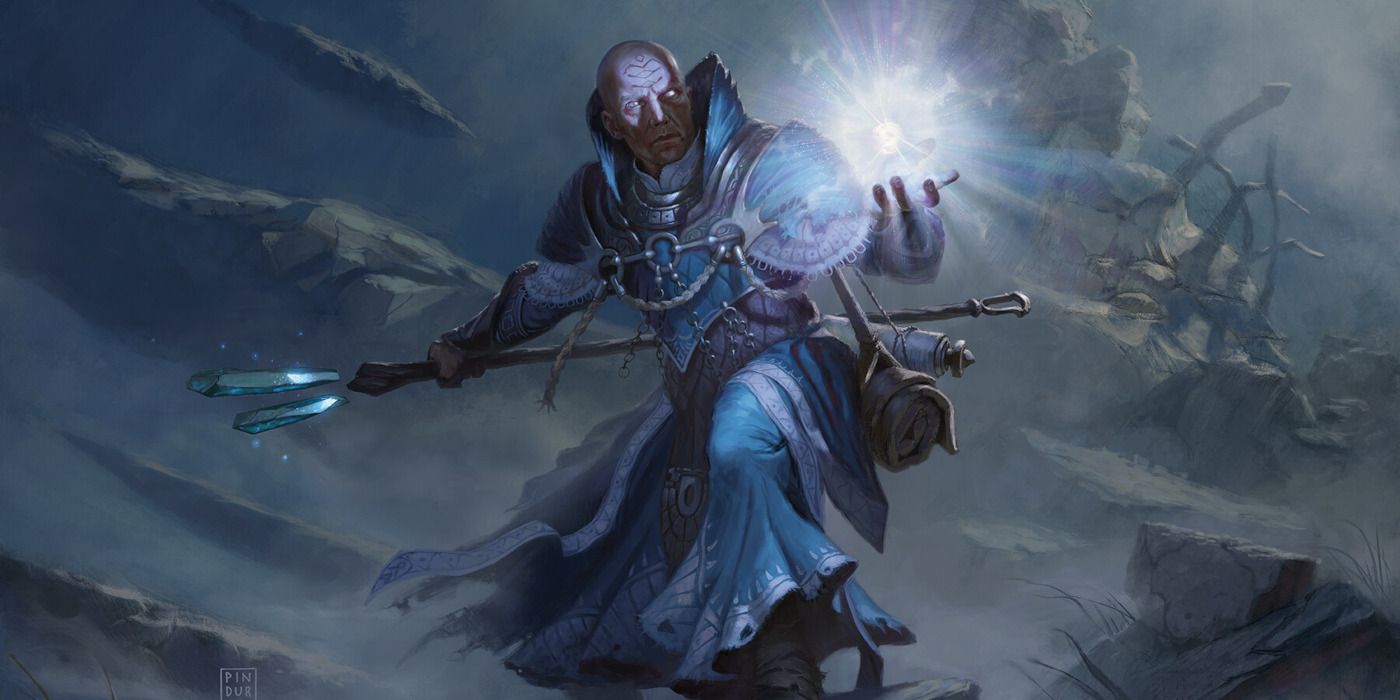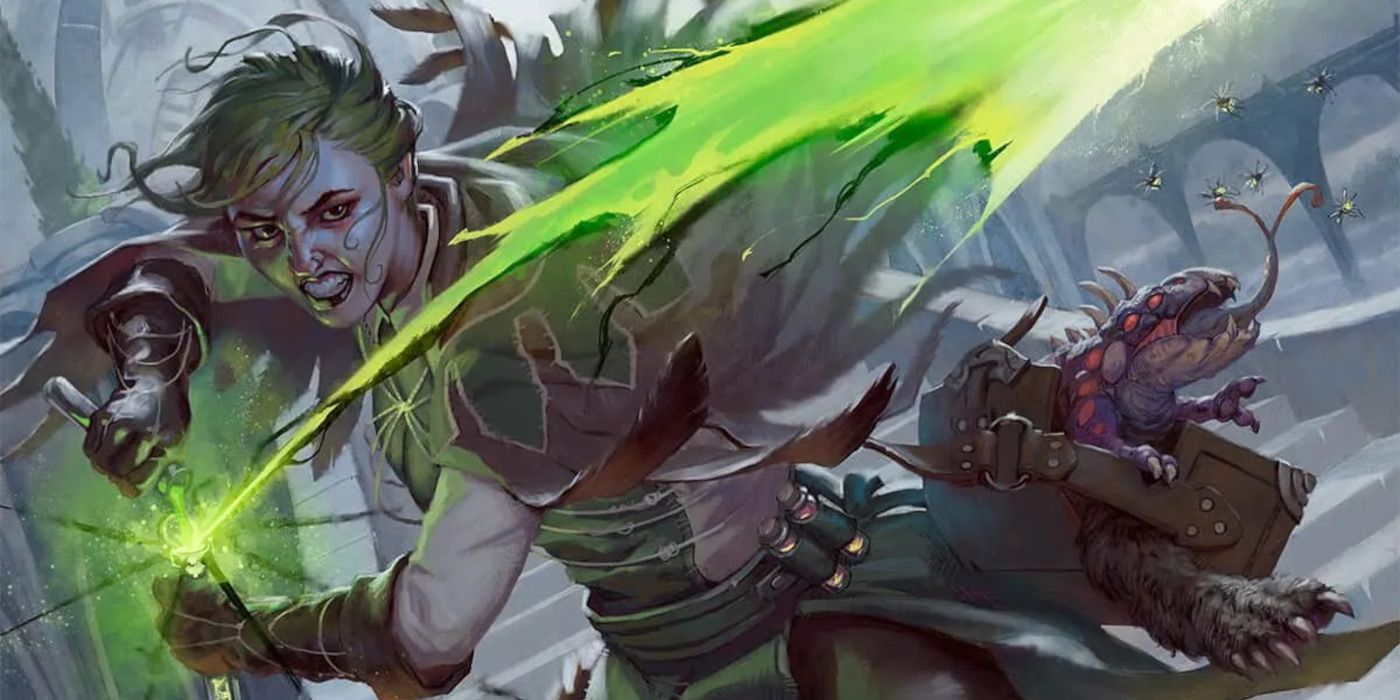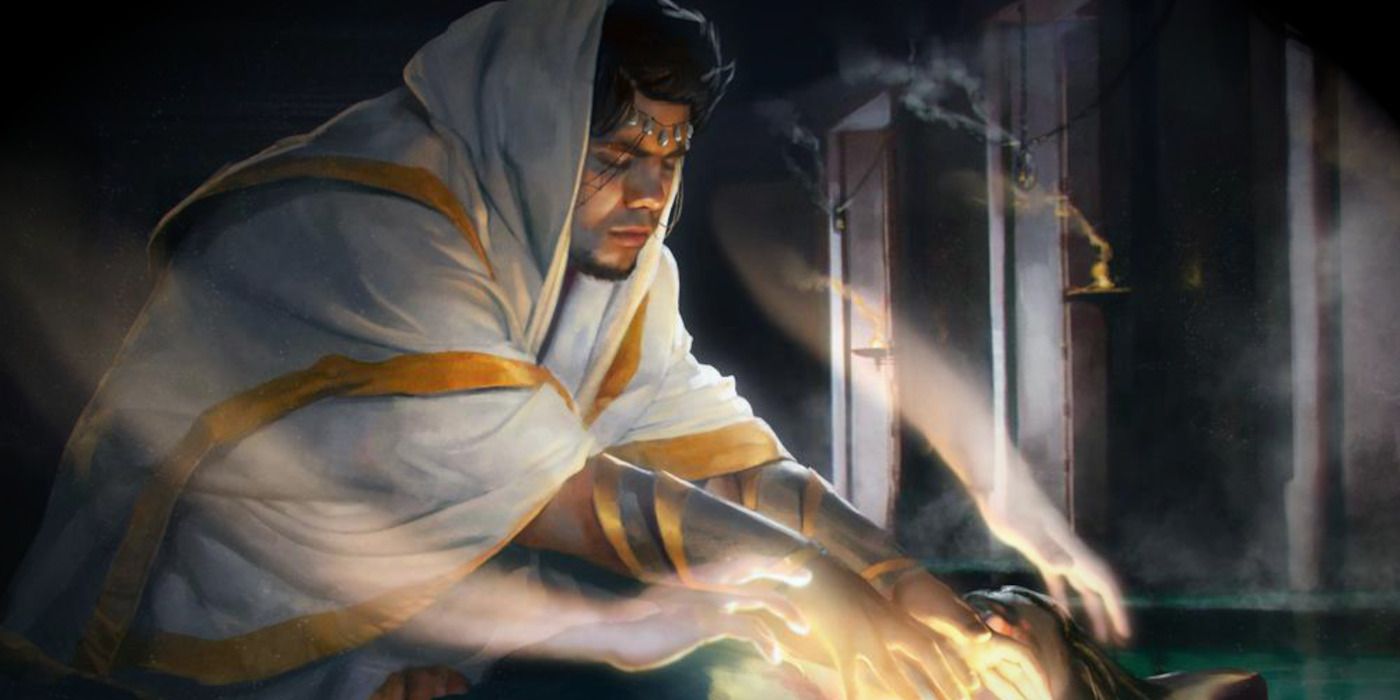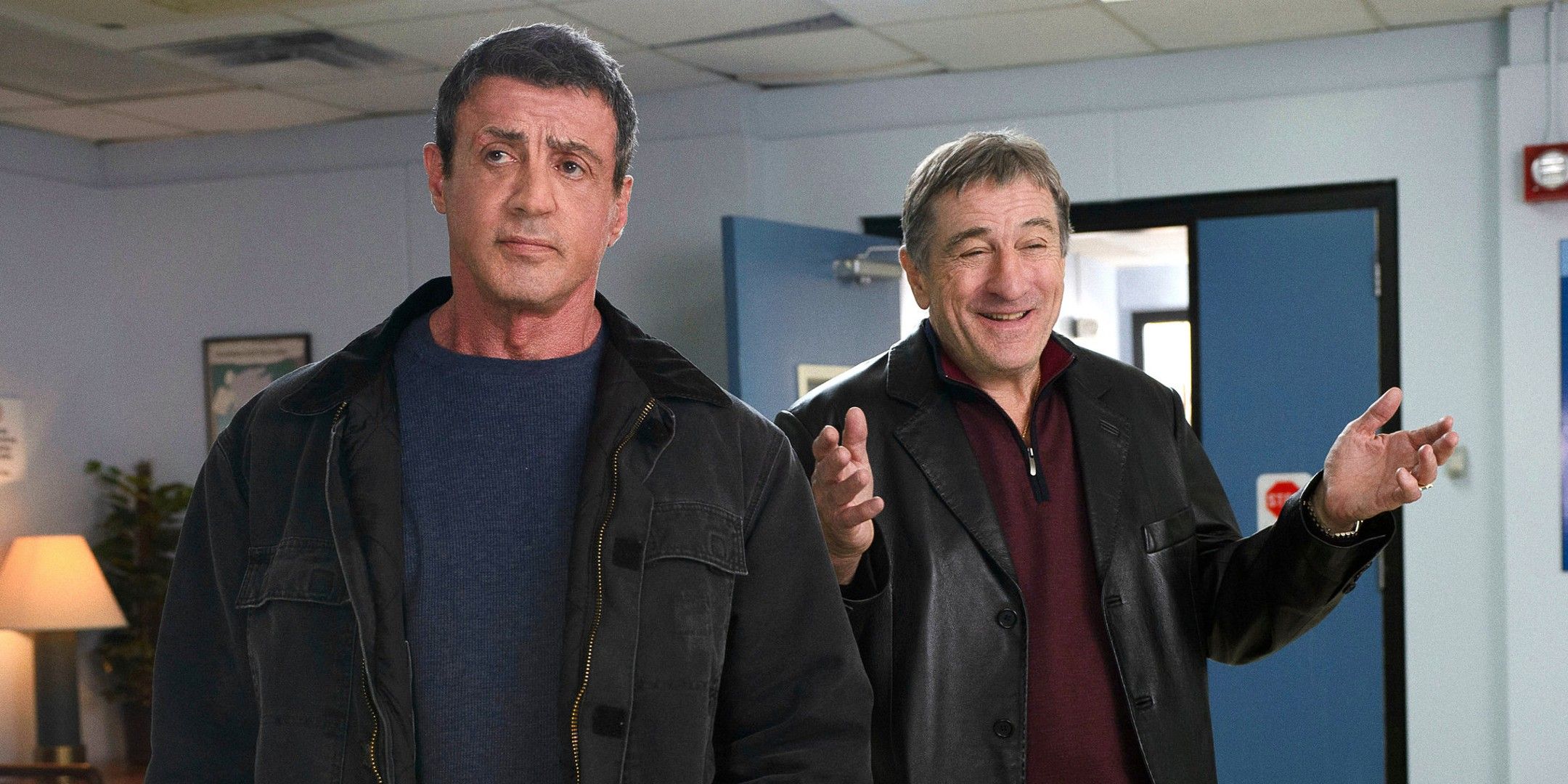The newest Dungeons & Dragons One D&D playtest release, Unearthed Arcana: Bastions and Cantrips, is out and open for surveys until November 5, 2023. Many of the changes Wizards of the Coast has proposed so far for the upcoming next edition of Dungeons & Dragons have been controversial, to say the least. From removing class-specific spell lists to changing critical successes and failures altogether, the game designers have been experimenting with a variety of new mechanics. In this latest update, a brand-new system for player strongholds called Bastions makes up the bulk of the content, but keen DnD players will take notice of some major changes to cantrips that could greatly affect game balance.
Cantrips are a notoriously difficult area of balance for DnD. Since these spells can be cast at will, designers have to be extremely careful that the spells can’t be abused, and don’t outshine non-magical options. Spells of first level and higher are easier to balance, since a limited resource (spell slots) generally keeps them in check. Cantrips are bound by tight, unspoken balance conventions in fifth edition, but One D&D seems to be largely doing away with those conventions. For those who aren’t deeply invested in spell balance, these changes may not immediately seem significant, but for players who are, One D&D’s updates ar a huge point of interest.
One D&D Cantrips Make Spellcaster Action Economy Too Efficient

The biggest potential problem at the forefront of One D&D’s new cantrip updates lies in the casting time changes of certain spells. Keen players will note that all the cantrips in DnD 5e have a one-action casting time, except for two spells: shillelagh and magic stone (from Xanathar’s Guide to Everything). Although these spells are cast as a bonus action, since they don’t actively contribute anything to the turn, instead modifying other actions, they aren’t an issue. One D&D has already changed the guidance and resistance spells to a reaction casting time, and now blade ward too, with a reduced effect to match.
Spellcasters are already extremely versatile compared to non-caster characters. The ability to consistently cast useful spells as an action and as a reaction every round in combat now makes them much more efficient than non-casters too. If non-casters gain a significant number of new reaction abilities, this may not be as big of an issue. As things stand, playing a spellcaster not only provides more things to do overall, it also allows for more opportunities to do those things in every round of combat. Blade ward is the most problematic example; blade ward is essentially free defensive power, with little to no trade-off, where previously it had significant trade-off.
One D&D’s Acid Splash Breaks Cantrip Conventions

Never before has DnD 5e seen a true ranged area-of-effect (AOE) cantrip in official material. Acid splash‘s previous iteration could hit two creatures in one casting, but never more. Other AOE spells at the cantrip level are all limited to a range of Self (five-foot radius), which means they can only be used against enemies within five feet of the caster — a major limitation, especially for squishies. The latest version of acid splash, however, breaks the unspoken rule. The spell keeps its 60-foot range, but now targets a five-foot radius sphere centered on a point of the caster’s choosing. If enemies are positioned ideally (which isn’t unreasonable), the spell can now hit twice as many targets, up to four.
Some players may argue that DnD’s area-of-effect spells are generally weaker than focusing damage on a single target. It certainly depends on the situation, and every table is different. Game masters who use more minions with low hit points provide better use cases for the new acid splash than those who mostly use elite enemies on their own. There’s no doubt that acid splash in fifth edition was a bit underwhelming, but One D&D’s buff may have gone too far. Only time will tell if play testing proves this change to be as powerful as it looks.
One D&D’s Friends Spell Loses Its Downside

Another infamously frustrating spell in 5e, friends, is often passed over due to the clause that makes the target hostile when the spell ends. One D&D’s latest Unearthed Arcana buffs the spell by completely removing the downside altogether. The new version of friends also uses the Charmed condition, which is a smart move by the designers to streamline the effect and open up synergies with other features that effect the Charmed condition. While the previous downside for friends was on the extreme side, having no downside may make the cantrip too easy to spam across social encounters.
True Strike Finally Does Something — But Is It Too Much?

Of all the notoriously underwhelming spells in DnD 5e, true strike takes the cake. The previous version was all but useless due its casting time, duration, and concentration requirement, to the point of gaining meme status (as seen in a YouTube video from Zee Bashew). One D&D’s true strike allows the caster to make an attack with a weapon as part of the casting, and to use their spellcasting ability modifier for the attack.
It also scales like other cantrips do, adding radiant damage at higher levels. This makes it almost effortless for spellcasters to match the abilities of martial characters, particularly at low levels (before extra attack). This is great news for DnD Gish players, but makes spellcasters even more OP compared to martials.
Spare The Dying Becomes A Ranged Spell In One D&D

This change is perhaps the most perplexing of the bunch, since spare the dying is already considered a solid spell by most standards. Previously a spell with a range of Touch, spare the dying can now be used at a 15-foot range, increasing to 30, 60, and even 120 feet at higher levels. Cleric and druid players certainly won’t mind the buff, as now they can more safely sit at range while keeping their allies alive. It does, however, make spellcasting even more appealing than it already was compared to the use of the Healer’s Kit.
One D&D playtest changes continue to shake up the 5e players know and love in some positive ways, but some more troubling. As playtesting continues and feedback rolls in, Wizards of the Coast has shown a commitment to changing based on community input. Even in the most recent update, the company has already removed the changes to spell lists per feedback, reverting from a three-category system to individual class lists seen in Dungeons & Dragons 5e. Wether these new cantrip updates, which seem to make spellcasters more overpowered than before, make the final version of One D&D in 2024 will ultimately be determined by the voice of the fans.





